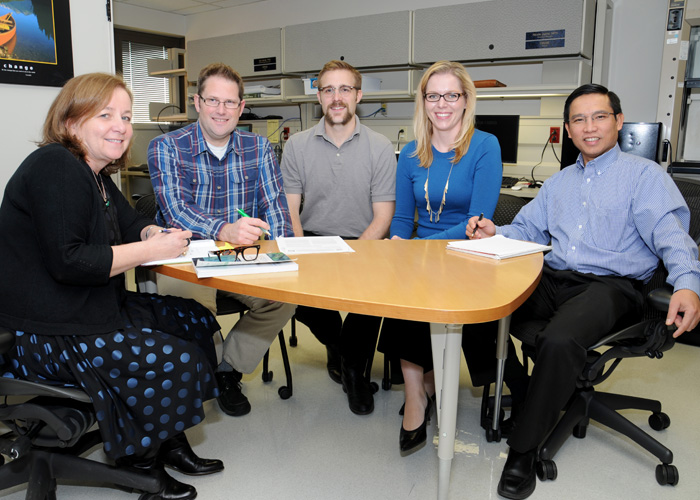Epidemiology, Biostatistics: A Change in Culture at USAISR

To optimize the quality of their research, investigators at the U.S. Army Institute of Surgical Research need scientifically sound study designs, meticulous data collection and expert analysis. A weak research design, hasty data collection or overly simplistic data analysis can be detrimental to a research study, resulting in the publication of incomplete findings or inaccurate conclusions. That's where epidemiologist Jeana Orman, Sc.D. and her team in the Epidemiology and Biostatistics Office can assist researchers.
"To do good research you must use the proper study design and perform the appropriate data analysis and interpretation," said Orman. "We help to make sure that the important things are measured so that the data that are analyzed and reported are meaningful."
Orman, who studied at Johns Hopkins and was a senior scientist at both the National Institutes of Health and the Centers for Disease Control and Prevention before coming to the USAISR, created the team of five epidemiologist/biostatisticians. Four of the staff are doctoral-level professionals trained in both epidemiology, the branch of medicine that studies the causes, risks and treatment of disease and injury, and in biostatistics, a field of statistics that focuses on biological and medical data.
"That team is phenomenal," said Lt. Col. (Dr.) Kevin Chung, the Clinical Trials in Burns and Trauma task area manager. "They can take us to another level."
"I'm excited to have this team here," said Vic Convertino, Ph.D., USAISR Combat Casualty Care Research senior scientist. "They can identify the best statistical tools for analyzing data which can add significant credibility and reliability to the investigators and the studies at the Institute."
Convertino pointed out that when analyzing data many researchers rely too heavily on statistical significance while not focusing enough on the strength of the association and whether it is clinically significant. For example, a large study comparing the effectiveness of two blood pressure medications may find that a two-point difference in blood pressure is statistically significant; but this difference is not meaningful for patient care.
"As this example shows, the focus on statistical significance doesn't always work in clinical studies," said Convertino. "We need to change the culture by taking the views of Orman's team to use and interpret statistics correctly."
Judson Janak, Ph.D., an epidemiologist and a member of Orman's team, stressed that research is a process and the entire team is able to assist researchers from identifying clinically relevant research questions in line with the Institute's mission, to final analysis and interpretation of results.
"The researcher has to define the research question," said Janak. "Then we help them develop a conceptual research model that guides the data collection process and the analytical plan."
"This new focus on appropriate design, analysis and interpretation is critical to keep us on point to meet the Army's needs," said Convertino.
Chung added that sound research benefits not only USAISR researchers who publish higher quality research, but also practitioners who rely on this information to form sound practices, which in turn benefits patients.
"It's about quality, not quantity," Chung said.
Chung also believes that the insight provided by the epidemiology and biostatistics team will take research at the USAISR to a higher level.
"I like the direction we're going," said Chung. "The caliber of our research has the potential to be on par with premier government research agencies like the NIH and the CDC.
Convertino agrees with Chung.
"The epidemiology and biostatistics team can change the culture of how we design our studies, apply statistical analysis techniques and interpret data," he said. "Cultural change is required."














